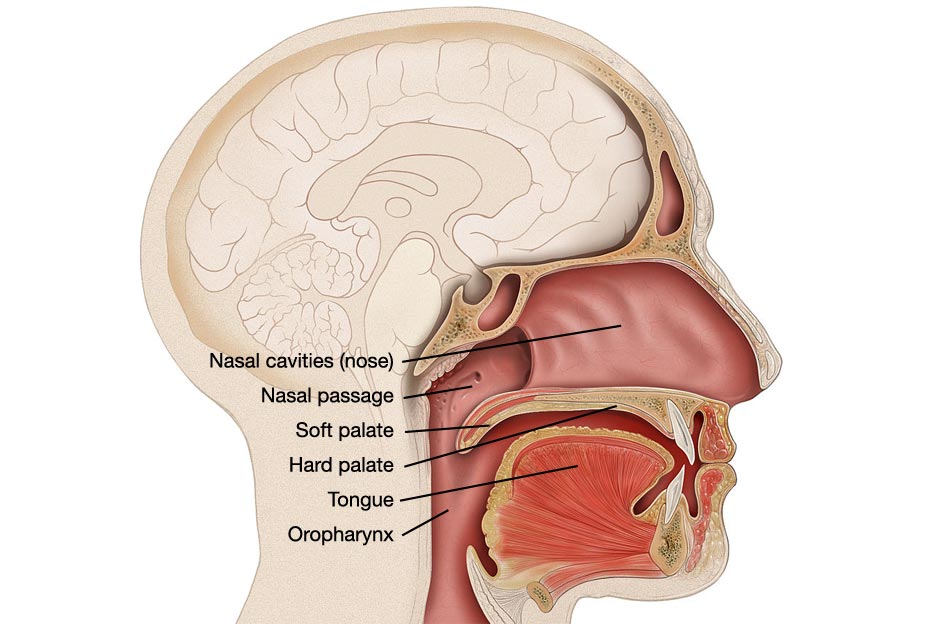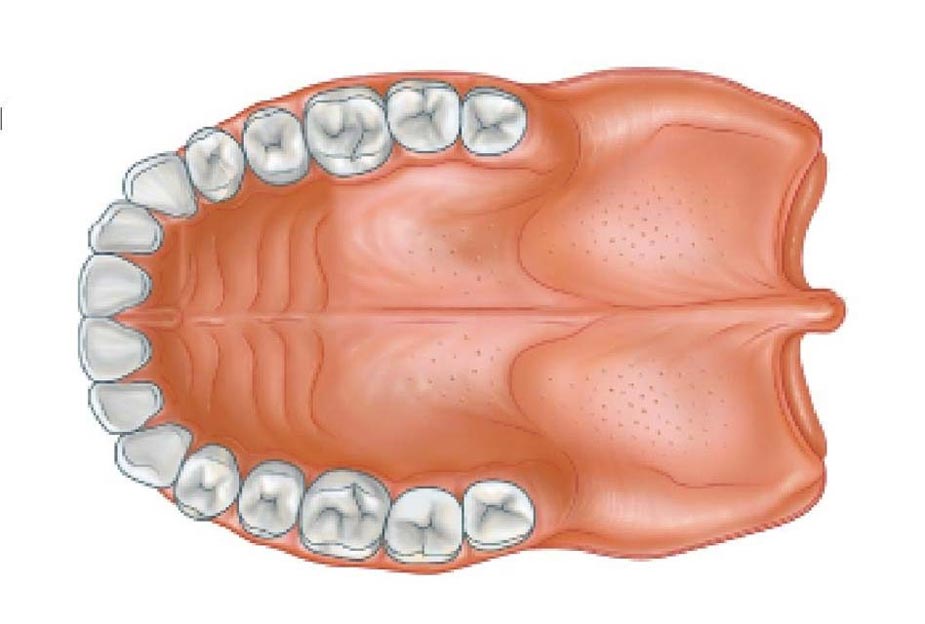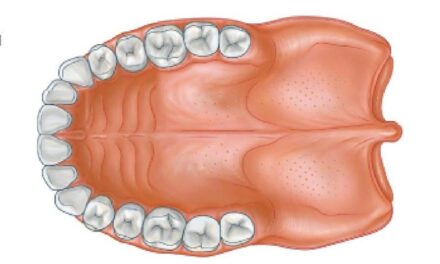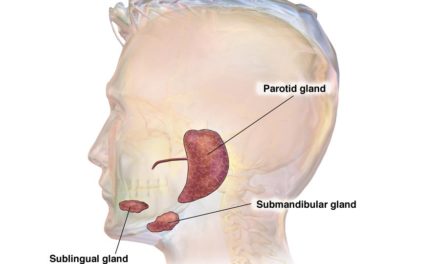The hard palate is the front subdivision of the palate of the mouth, which is a horizontal anatomical part that separates the oral cavity from the nose cavities. Also called the roof of the mouth, the palate has two parts, the hard palate to the front, and the soft palate to the back.
Anatomy of the hard palate
The hard palate occupies the biggest portion of the palate, about two-thirds. The hard palate is considered to be part of the mouth. Whereas the soft palate is smaller and is part of the oropharynx (part of the pharynx that is behind the uvula).
 The hard palate is made of two bones called the palatine process of the maxilla, and the paired palatine bones. The hard palate has several foramina (holes), which serve as corridors for nerves and blood vessels. The bone part of the palate is covered by a moist and strong layer of mucous-membrane tissue, that secretes small amounts of mucous. In many lower vertebrates, the hard palate has teeth.
The hard palate is made of two bones called the palatine process of the maxilla, and the paired palatine bones. The hard palate has several foramina (holes), which serve as corridors for nerves and blood vessels. The bone part of the palate is covered by a moist and strong layer of mucous-membrane tissue, that secretes small amounts of mucous. In many lower vertebrates, the hard palate has teeth.
The borders of the hard palate are the maxillary teeth to the front and sides, the nasal cavities to the top, the mouth to the bottom, and the soft palate to the back.
Functions of the hard palate
The hard palate has two main functions, feeding and speech.
The tissue layer that covers the bone on the palate has several ridges. Those elevated ridges help grip food while the tongue agitates it during the chewing process.
The hard palate also offers space for the tongue to move freely within the mouth. The resulting dome shape helps infants suckle on foods, because it creates a vacuum that forces the liquid into the mouth so that it can be ingested.
Moreover, the hard palate is important for speech, creating certain phonetic sounds when the tongue touches it. The consonants which sounds are created are “j”, “ch”, “d” and “t”.
Hard palate anomalies and diseases
Palatal abscesses can appear, but the origin of the infection would more likely be related to teeth, or their neighbouring organs.
Cleft palate is a birth defect characterized by an opening in the palate. This happens when the left and the right portions of the palatal plates do not fuse together during child development in the womb. This opening allows food in the mouth to enter the nose. Cleft palate also interferes with speech because some consonants cannot be well pronounced. But this defect can be corrected surgically when the child is young. Cleft palate is often associated with a split in the upper lip called cleft lip.
Palatal torus (plural: tori), is a bony protrusion of the hard palate. They are common and can increase in size as the person gets older. It is believed that tori are caused by local stresses, with some genetic influences. Tori have no necessary treatment, except if a patient needs to place a full denture, or partial denture, that cover the palate.
Palate cancer are tumours that usually begin in the soft palate. Like all other cancers of the mouth, people who smoke and/or who consume alcohol are more susceptible. When palate cancer can be treated, doctors use a combination of surgery, radiation therapy and chemotherapy.
References
- Shkoukani MA, Chen M, Vong A. (Cleft Lip – A Comprehensive Review). Front Pediatr. 2013; 1: 53.
- National Institute of Dental and Craniofacial Research, (Cleft Lip & Palate).
- Saroch A, Pannu AK. (A case of hard palate perforation). J Family Med Prim Care. 2016 Oct-Dec; 5(4): 865–867.
- Kenhub, (Hard palate).
- Wikipedia, (Torus Palatinus).
- Photo adapted from Patrick J. Lynch, medical illustrator.
The information above should be used as a reference only. Any medical decision should not be taken before consulting a health care professional.




